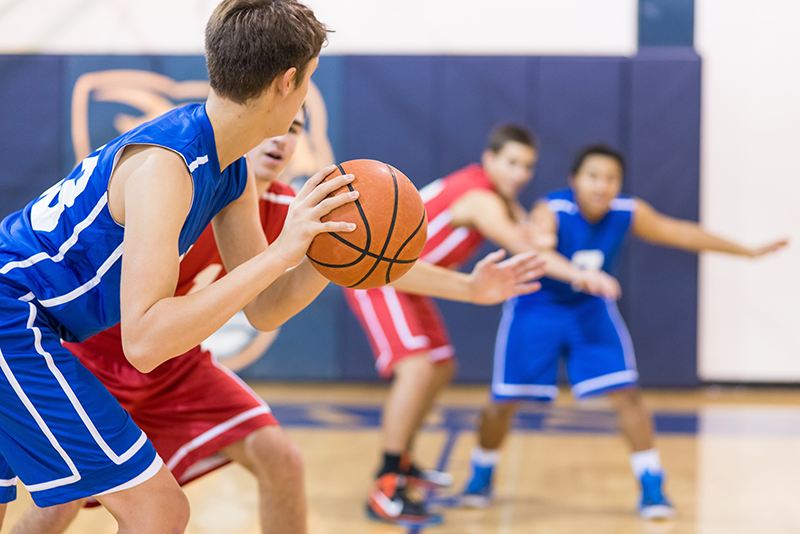Why Coaches Shouldn’t Train Young Athletes Like Olympians

Many youth competitive programs operate on the same model: fixed periodization tied to league schedules, year-round single-sport focus, adult-level training intensity, and competition structured around winning standings. The assumption is that earlier specialization and higher intensity produce better athletes.
The Sport for Life framework contradicts this entirely. And the evidence backs it up.
The Core Problem
Children aren’t small adults. Growth plates are still closing. Tendons and ligaments attached to them are vulnerable to repetitive, high-intensity stress in ways adult tissues aren’t. Maturation rates vary enormously—two 13-year-olds can differ by years in biological development. Yet most programs organize by chronological age and train identically regardless of maturation stage.
The result: overuse injuries that hinder skill development, psychological burnout that drives dropout at critical ages and development stages, and false talent identification that cuts late bloomers while potentially leading to stagnation of early developers.
Worse, early specialization actually limits long-term athlete development. Kids who sample multiple sports develop better fundamental movement skills, transferable tactical understanding, and adaptive capacity. Train a 12-year-old like a 20-year-old specialist, and technical competence may emerge quickly—but the athlete’s ceiling likely will be lower than it would have been.
What The Framework Proposes
Sport for Life distinguishes between developmental stages, not birthdays:
Learn to Train (from approximately age eight for females and age nine for males until the onset of the adolescent growth spurt):
- Broad, multi-sport, multi-position and multi-discipline experience
- Simple periodization; developmentally appropriate programming, not elite-level planning
- Informal competition emphasizing exploration and skill acquisition
- Recovery integrated into structure
- Fun and socialization as core elements
Train to Train (period of the adolescent growth spurt; approximately ages 11-15 for females and 12-16 for males):
- Major fitness development aligned with maturation and biological markers
- Technical and tactical skill refinement; position specialization begins
- Training-to-competition ratio managed at 60/40
- Recovery and mental preparation formalized
- Commitment and fun coexist
What the framework outlines isn’t cosmetic. These aren’t superficial recommendations. They are evidence-informed and require thoughtful commitment. Once athletes progress through their development stages into sport specialization, then the priorities shift again, and guidelines around intensity and duration of sessions, when competition peaks, and how recovery integrates into programming will be adjusted accordingly.
Programs implementing developmentally appropriate training see higher retention through adolescence, better long-term athlete development and eventual performance, and fewer overuse injuries. Kids stay engaged because programming remains progressive and challenging. They reach higher ceilings because they’ve built broad foundations rather than narrow specialization. International athlete development research consistently shows this approach produces better athletes and better long-term participation.
What Coaches Can Do
Rebalance training structure. Shift toward the 60/40 training-to-competition ratio the framework recommends for Train to Train. This maintains engagement while building a technical and tactical foundation.
Periodize the week. Vary intensity across sessions rather than maintaining constant high-intensity training. This approach prevents burnout and aligns with how high performance athletes structure their development.
Match training to maturation stage. Account for developmental differences within the same age group rather than treating all kids identically by birthday. Early-developing athletes and late bloomers have different readiness levels; training can reflect this.
Support multi-sport participation. Athletes who compete in other sports during off-seasons develop better physical literacy and transferable skills while also lowering injury and burnout risk.
Integrate recovery formally. Build recovery work into coaching plans—not as options, but as an essential training components. This includes mobility work, sleep discussions, and active recovery protocols.
Measure individual progression. Track player development markers—skill acquisition, fitness gains, retention through critical adolescent years—alongside competitive results.
System Change
Prioritizing the wrong things at the wrong times directly contradicts long-term, holistic development. Coaches are evaluated on league wins. Club directors market based on trophies. Parents expect visible competitive results. Taking a long-term approach can feel like a detour instead of the best route.
But systems can shift. When club directors measure success by long-term retention and progression rather than trophy counts. When coaching education emphasizes developmental principles. When funding models reward keeping athletes engaged and learning through adolescence instead of winning U-12 tournaments. When enough program leaders make this pivot together, the entire ecosystem can realign.
The framework exists because this knowledge is solid and proven. The evidence is clear. Implementation is the next step—and it starts with individual programs making the choice to prioritize long-term athlete development.
Next Steps
Sport for Life provides resources and support for coaches and program leaders ready to implement developmentally appropriate training. Contact Sport for Life directly to access frameworks, research, and guidance tailored to your program’s needs.
Workshops and eLearning modules are available through Sport for Life’s campus, offering practical training on developmental stages, periodization, athlete assessment, and system alignment. These resources connect the framework to coaching practice, providing concrete tools for implementation.

